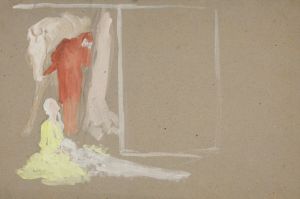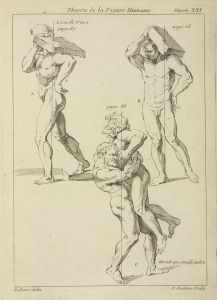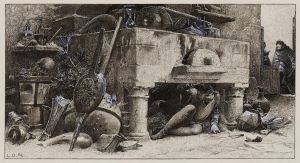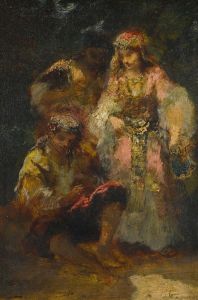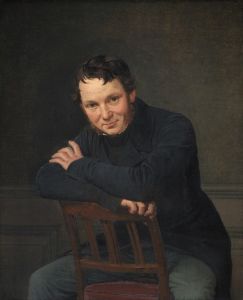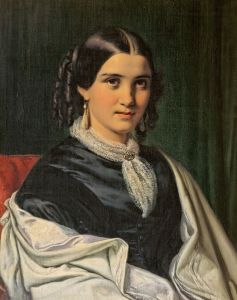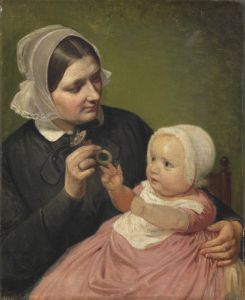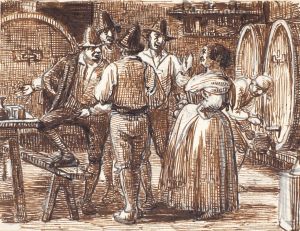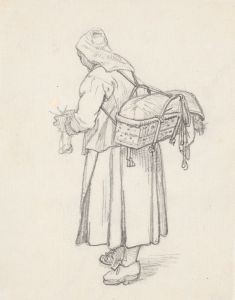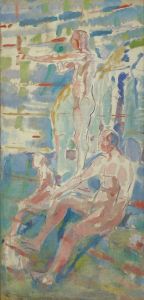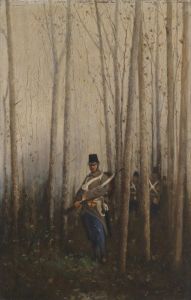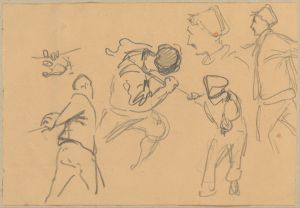
Studieblad med otte mandshoveder og en kvinde uden hoved
A hand-painted replica of Wilhelm Marstrand’s masterpiece Studieblad med otte mandshoveder og en kvinde uden hoved, meticulously crafted by professional artists to capture the true essence of the original. Each piece is created with museum-quality canvas and rare mineral pigments, carefully painted by experienced artists with delicate brushstrokes and rich, layered colors to perfectly recreate the texture of the original artwork. Unlike machine-printed reproductions, this hand-painted version brings the painting to life, infused with the artist’s emotions and skill in every stroke. Whether for personal collection or home decoration, it instantly elevates the artistic atmosphere of any space.
Wilhelm Marstrand (1810-1873) was a prominent Danish painter and illustrator, known for his lively and detailed depictions of everyday life and historical scenes. One of his lesser-known works is "Studieblad med otte mandshoveder og en kvinde uden hoved," which translates to "Study Sheet with Eight Male Heads and a Woman without a Head." This piece is a study drawing, showcasing Marstrand's skill in capturing human expressions and anatomy.
The drawing is a testament to Marstrand's dedication to understanding and portraying the human form. It features eight distinct male heads, each with different expressions and angles, demonstrating his ability to convey a wide range of emotions and characteristics. The inclusion of a headless female figure suggests that Marstrand was experimenting with composition and form, possibly preparing for a more complete work or simply practicing his technique.
Marstrand was a central figure in the Danish Golden Age of painting, a period in the 19th century marked by a flourishing of the arts in Denmark. He studied at the Royal Danish Academy of Fine Arts in Copenhagen and later traveled extensively in Europe, including Italy, where he was influenced by the works of the Old Masters. His travels and studies greatly enriched his artistic style, blending Danish traditions with broader European influences.
Throughout his career, Marstrand was known for his genre scenes, historical paintings, and portraits. His works often depicted scenes from literature, everyday life, and historical events with a keen eye for detail and a sense of narrative. Marstrand's ability to capture the subtleties of human expression and interaction made his works particularly engaging and relatable.
"Studieblad med otte mandshoveder og en kvinde uden hoved" fits within this context as an example of his preparatory work. Artists often create study sheets to experiment with different poses, expressions, and compositions before committing to a final piece. These studies are valuable for understanding the artist's process and the development of their ideas.
Marstrand's contributions to Danish art were significant, and he held several important positions, including a professorship at the Royal Danish Academy of Fine Arts. His influence extended to his students, many of whom became notable artists in their own right. Marstrand's legacy is preserved in numerous collections, including the National Gallery of Denmark, which houses many of his works.
In summary, "Studieblad med otte mandshoveder og en kvinde uden hoved" is a study drawing by Wilhelm Marstrand that showcases his skill in depicting human expressions and forms. It reflects his broader artistic practice and his contributions to the Danish Golden Age of painting. The drawing is an example of his preparatory work, providing insight into his creative process and his dedication to mastering the human figure.





